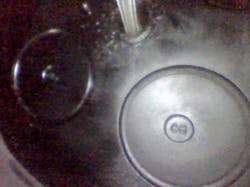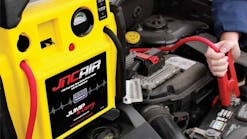Guest Blog: How to determine the cause of a misfiring cylinder the easy way
You get to work on Monday morning and have a Ford Power Stroke sitting in your bay with a single-cylinder constant misfire. After some testing, you find that cylinder two has low compression. You call the customer and explain the situation. When you are done, they ask for more testing to determine the cause.
At this point, you have two options, you can perform a leak down test and make a determination based on what you believe has happened while also taking the time to remove the cylinder head to confirm your suspicions, or you can take the easy route …
With today’s digital imaging equipment, we can remove the injector out of the bad cylinder and look down through the injector hole to see what’s going on. In order to do this, you will need a borescope with a camera under 5.5mm in diameter. Snap-on makes a 5.5mm dual-camera borescope that will fit. Autel also has a 5.5mm cable with dual cameras that works with both their MV460 and MV480 digital videoscopes; the cable is sold separately. Also available is the Vividia D3145 by Oasis Scientific. This camera features a 4.5mm one-way articulating camera head capable of rotating a complete 180 degrees. If you want more flexibility, Oasis Scientific also offers the Vividia D3245 which is a 4.5mm two-way articulating borescope. These cameras offer great visibility in the cylinder as you can look directly at the face of the valves and inspect for damage.
Being able to have visual clarification of what is causing the misfire not only for a technician but also for a customer is extremely valuable. If you have a valve or a piston that has been damaged and you can show that picture to the customer instead of having to explain test data or a waveform. It is much easier for them to understand.
Information provided by Oasis Scientific



